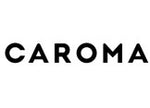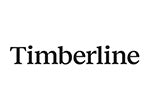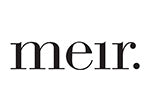Measuring is a compulsory process when planning to renovate any room in your home or building. Whether you create mood boards or plan your design first, measuring always has to be done at the initial stage of the renovation project.

Australia's Largest Online
Over 1M+ products shipped
60 day extended returns
Measuring is a compulsory process when planning to renovate any room in your home or building. Whether you create mood boards or plan your design first, measuring always has to be done at the initial stage of the renovation project.
The commonly used unit of measurements in the building industry is millimetres (mm). Lengths, widths, depths and heights are usually given in millimetres. Where larger dimensions are shown such as the floor plan area of a room, metres will be used. Centimetres are rarely used.
All cabinetry styles follow the same measurement guide as explained above. If you are a first time renovator, figuring out where to measure for the Depth, Width and Height of a cabinet will become intuitive with continued research and hands on experience.
Here's the measurements for each cabinetry style explained:
Measuring is a compulsory process when planning to renovate any room in your home or building. Whether you create mood boards or plan your design first, measuring always has to be done at the initial stage of the renovation project.
This cabinet is used where you have cabinets continuing round a corner. The Blind Corner Cabinet extends to the adjacent wall, behind the adjacent cabinetry. Imagine a long cabinet with just one door. As items positioned toward the far end of the cabinet can be harder to reach, it is a good idea to incorporate storage baskets or boxes to make items more accessible.
Wall cabinets can be fitted on the wall above your laundry working area, usually between 500mm and 700mm above your benchtop. Wall cabinets are a great option to create additional storage space, especially in smaller rooms where storage space is a premium. Measure from wall to wall and keep in mind where windows are and any lights, fans or other features that may affect the amount of space available for this cabinetry style.
This cabinetry style is fitted to the wall above the base cabinetry to fit the corner. To make sure this cabinet fit’s into place, measure from the corner of your wall to the right for the width and then measure from the corner of your wall to the left for the length of your cabinet.
Open shelves can be positioned below, or in place of wall cabinets to store items that are used regularly. With open shelves having no cabinet doors and only a base, it is best to install open shelves at an easily accessible height above the benchtop to store items you would use on a daily basis.
Tall cabinets are usually placed at the end of the room in a laundry floor plan in order to keep the height of cabinetry consistent and fit perfectly with the flow of wall cabinets. The most important measurement for this cabinetry style is the height. Make sure the height of your tall cabinets fits perfectly in your room or proposed space and is not obstructed by lights, ceiling fans and any other feature in your laundry room.
Where your cabinetry is finishing against a wall, you will require a filler panel. This fills any space between the wall and your cabinetry and allows doors to open completely without hitting the wall. Where your cabinetry finishes within the room you will require an end panel. Cabinet carcasses are white and are ‘dressed’ in coloured panels. End panels ensure that any visible cabinet ends are dressed. If you are leaving a gap between cabinets for a washing machine, you may also like to incorporate end panels on either side of the gap.
Consider the size, style and shape of your sink when measuring your laundry dimensions. Will your sink be stand alone with a built-in cabinet, or need to be recessed into your cabinet top? Check out a small selection of laundry sinks & tubs below, or view our whole range available here!


Switch to your local store for faster shipping and local deals.










